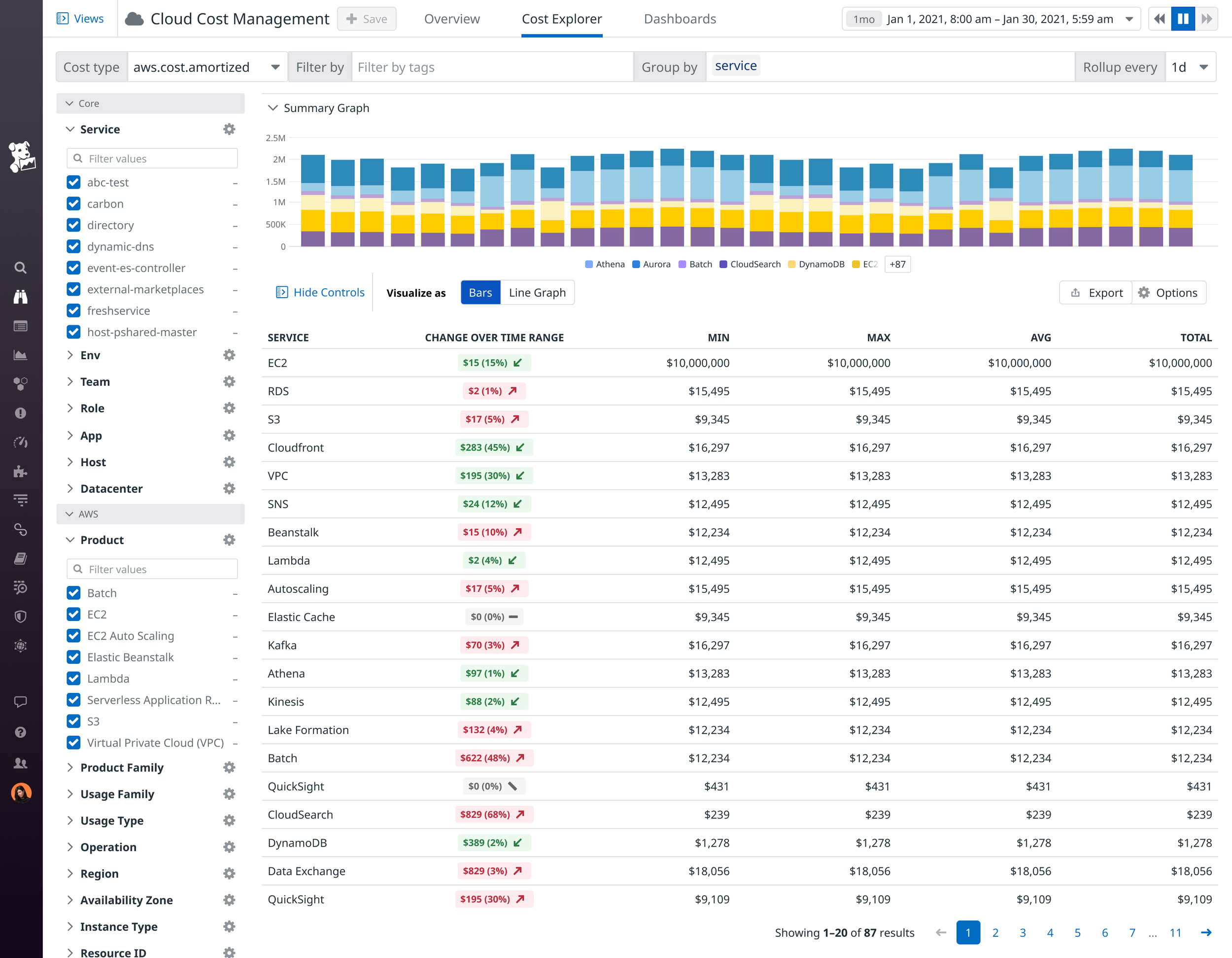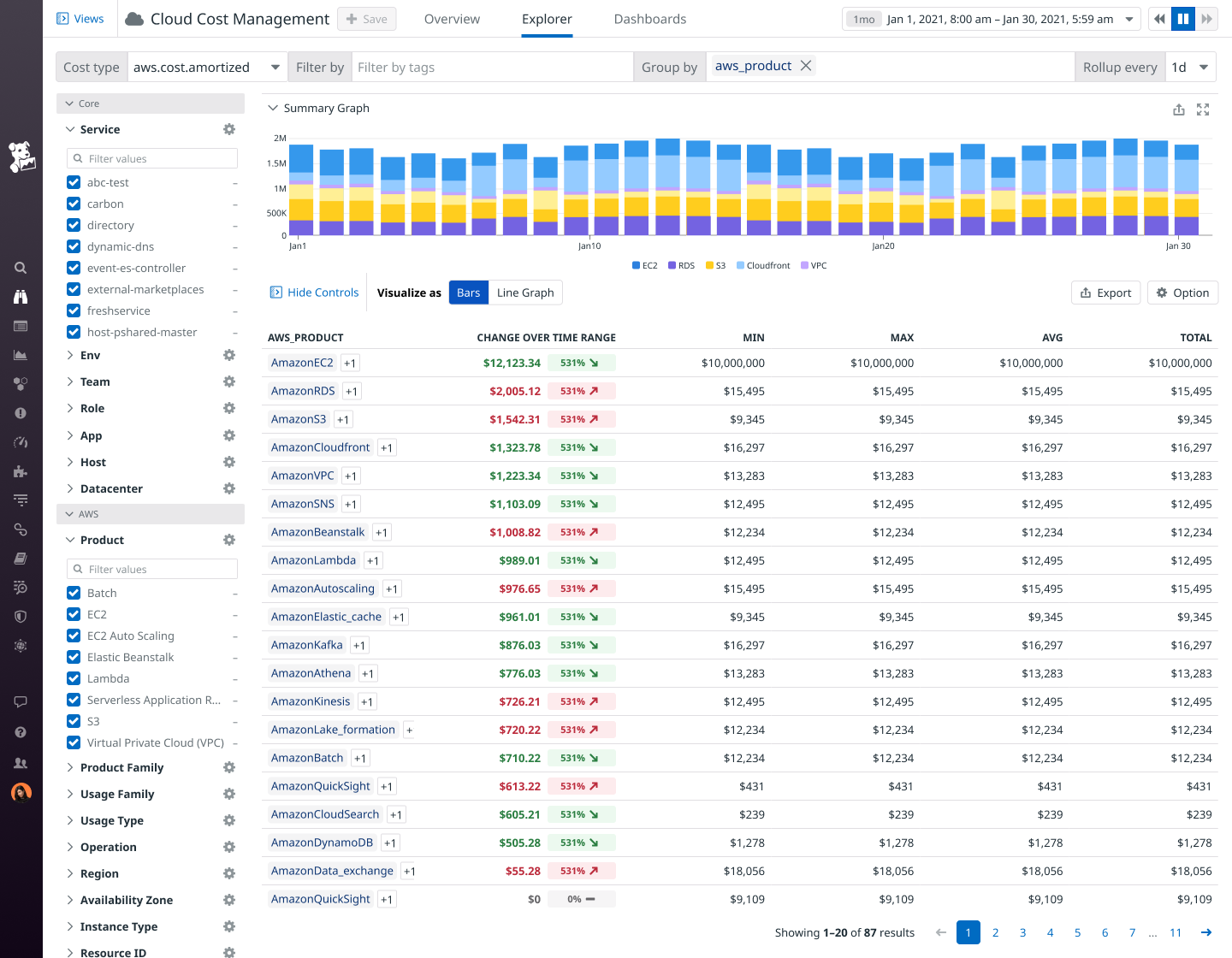
Cloud Cost Management
Cloud cost management is the practice of tracking, analyzing, and optimizing cloud spending. It helps teams monitor usage, attribute costs, eliminate waste, and align cloud investments with business goals.
Overview
Problem
As companies scale their cloud infrastructure, controlling and understanding cloud service provider (CSP) costs becomes increasingly difficult—especially amid economic uncertainty and rapid digital growth. Volatile usage patterns demand clearer visibility, root cause analysis, and cost optimization. To align spend with business goals, organizations need actionable insights that connect engineering decisions to cost outcomes and enable continuous optimization.
Opportunity
Cloud costs often grow month over month, but teams lack the clarity to separate necessary spend from waste. Without visibility, inefficiencies go unnoticed—costing companies millions. Datadog is uniquely positioned to solve this with Cost Explorer, a 0 to 1 product that leverages the telemetry data we already collect to show how resources are actually being used.
This marks an exciting opportunity to expand into a new industry vertical—cloud cost management—where existing solutions often prioritize provider incentives over user impact. Unlike cloud providers, we offer unbiased, usage-driven insights that empower teams to take action and optimize spend with confidence.
Role
End-to-end Product Designer with Design Lead
What is Cloud Cost Management?
Cloud cost management is the practice of tracking, controlling, and optimizing spending on cloud infrastructure and services. It involves:
Monitoring how resources (like compute, storage, and data transfer) are used
Attributing costs to teams, products, or services
Identifying waste (e.g., idle resources, inefficient configurations)
Forecasting future spend
Optimizing usage through rightsizing, automation, and discount planning (like reserved instances or savings plans)
The goal is to ensure cloud investments are efficient, aligned with business priorities, and financially sustainable.
PROBLEMHow do we build a tool that helps users maintain their cost infrastructure, understand changes in spending, and take remedial action?
SOLUTIONWe build a cloud cost management tool that empowers teams to understand, monitor, and act on their cloud spend. Our solution will:
Surface high-level summaries to help teams get educated quickly and continuously monitor spend trends over time
Enable deep investigations by allowing users to search for anomalies and uncover their root causes
Simplify setup and data management by making it easy to configure and manage cloud cost data sources
Design
Enable deep investigations by allowing users to search for anomalies and uncover their root causes
Information Architecture
We went with a search interface that aligned to existing Datadog patterns while supporting new user personas—Cloud Cost Managers and Finance Managers—ensuring the experience felt familiar yet purpose-built for financial visibility and analysis.
Explorations
We experimented with a few different mini visualizations and played with showing change in dollar amounts and percentages.
Final Design
Renamed the page to “Explorer” for consistency across Datadog
Removed trendviz mini visualizations due to technical and UX limitations
Consolidated and clarified the “Change over time range” column with tooltips
Replaced plain text with clickable service tags for easier filtering
Default view shows 30 days of amortized AWS costs, grouped by service
Graph supports both stacked bars and line views, with hover, zoom, and export functionality
Added key metrics: min, max, average, and total
Standard deviation is available as an optional column for advanced users
Query Editor and facet picker follow existing Datadog standards
Impact
We launched the product at Datadog’s annual conference, DASH, and entered private beta shortly after. What began with just a few design partners quickly grew to 30+ participating customers. Since then, we’ve continued to iterate on the pages above based on feedback and evolving needs..







